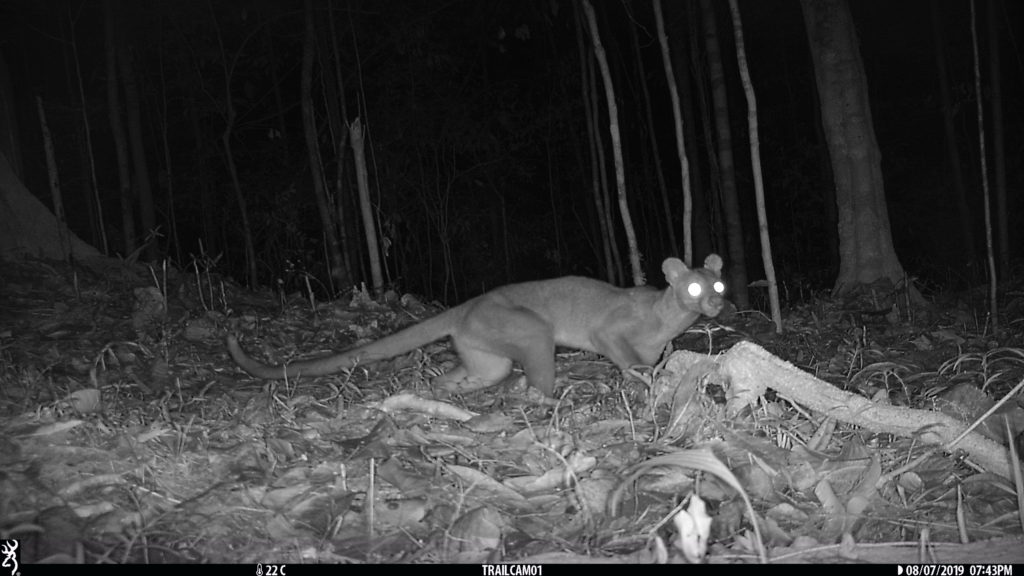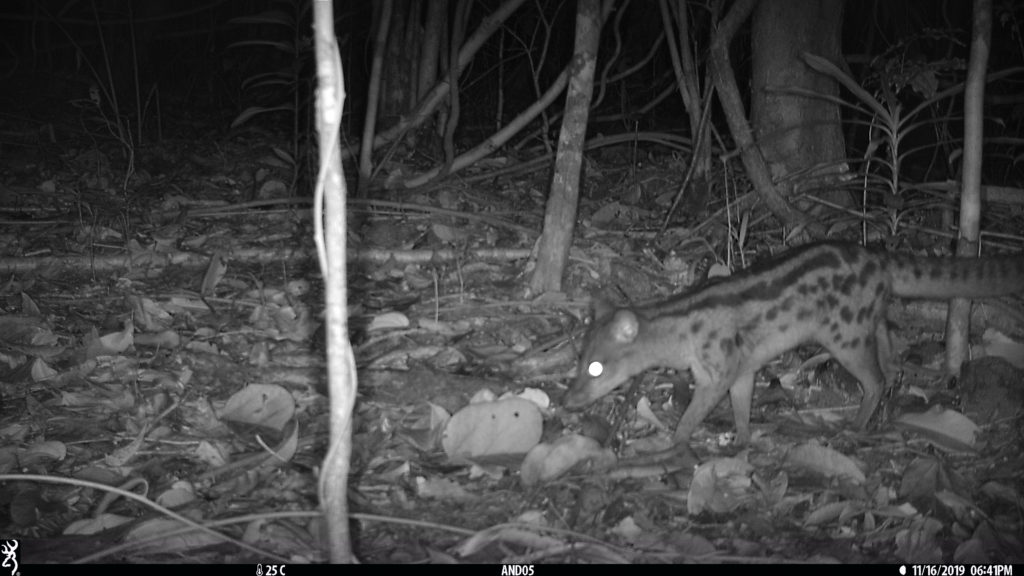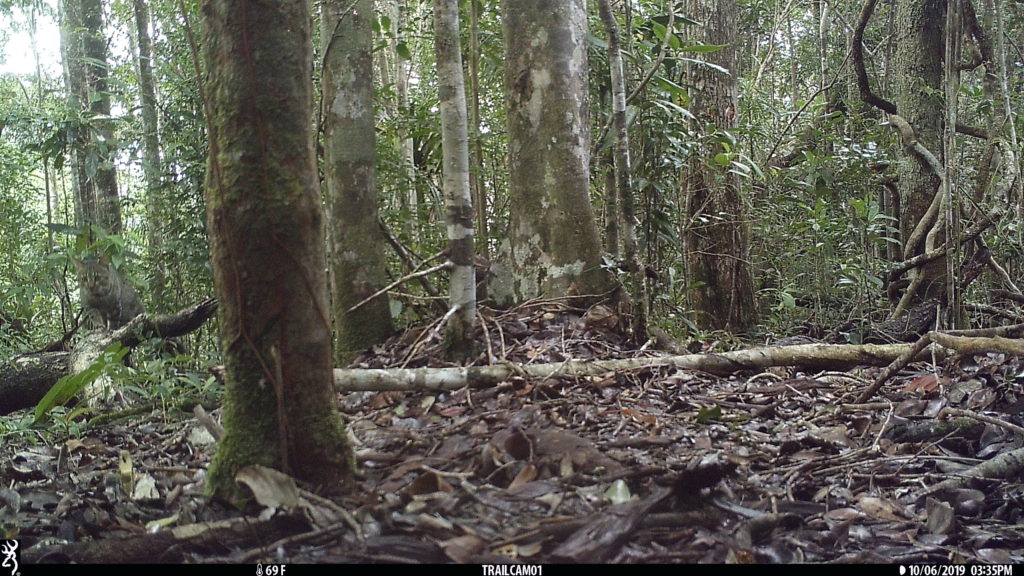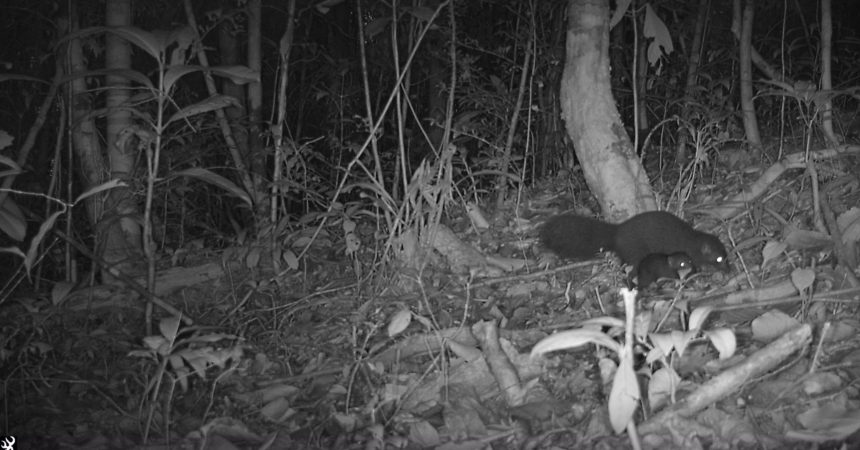It has been nearly 15 years since I first traveled to Madagascar. During my early years working on the island, following lemurs from dawn to dusk, and sometimes dusk to dawn, I never once saw the elusive fossa Cryptoprocta ferox, Madagascar’s largest carnivore and feared predator of lemurs. This species is relatively common to see in the western, dry forest habitats, often loitering around research and tourist camps, but in the eastern rain forests, they are among the most difficult species to observe. Then, in October 2017, I began my work through San Diego Zoo Global (SDZG) focusing on red ruffed lemurs Varecia rubra—but I kept watching for fossa, too.
San Diego Zoo Global’s main research site in Madagascar is Andranobe, situated in the lowland rain forest of Masoala National Park in the northeast. A couple of weeks into my first trip there, I spotted my first fossa, meandering along the rocky shoreline of the nearby river. I was amazed, and just stood in silence as it scent-marked a tree on the opposite side of the narrow river.
The momentary sight of this animal made my heart race, and then lo and behold, a second fossa appeared and moved nonchalantly towards me. It lowered itself at the edge of the river, no more than 15 feet from me, lapping up an early afternoon drink in the shallows and monitoring the immediate area, including me! I still kick myself for forgetting my camera that day, but the memory of that 20-minute experience with two fossa in the rain forest will be etched in my mind forever.

Since that day two years ago, I have not seen another fossa at Andranobe or elsewhere in eastern Madagascar. But, that does not mean they do not slink through the underbrush undetected. We know this thanks to trail cameras.
As part of our species and habitat monitoring program, we have created a grid of cameras across the entire Andranobe research site. The cameras are a wonderful gift donated by the SDZG Ocelots group.

These cameras allow us determine both the density and distribution of the most cryptic and elusive fauna (like the brown-tailed mongoose Salanoia concolor pictured at the top of this story) in one of the few remaining lowland primary rainforests in Madagascar. The cameras also allow us to evaluate the pressures that may be inflicted by exotic species. These animals can cause great harm to natural ecosystems, and so monitoring where they are and how they are affecting native fauna is critical for conservation.

It is only with these trail cameras, an increasingly common conservation tool, that we are able to obtain this important information on both the cryptic and exotic species present at our sites. Furthermore, this passive method of data collection runs nonstop, even now in the midst of a pandemic that has stalled much field research around the world, our trail cameras are continuing to monitor the faunal diversity of Andranobe. As such, it is important to remember that while Madagascar tends to be synonymous with lemurs, there is an incredible diversity of non-lemur fauna that inhabit this unique island and are important for conservation.
Tim Eppley is a postdoctoral fellow at the San Diego Zoo Institute for Conservation Research. Read his previous blog, Expedition to Ambatotsirongorongoro.





